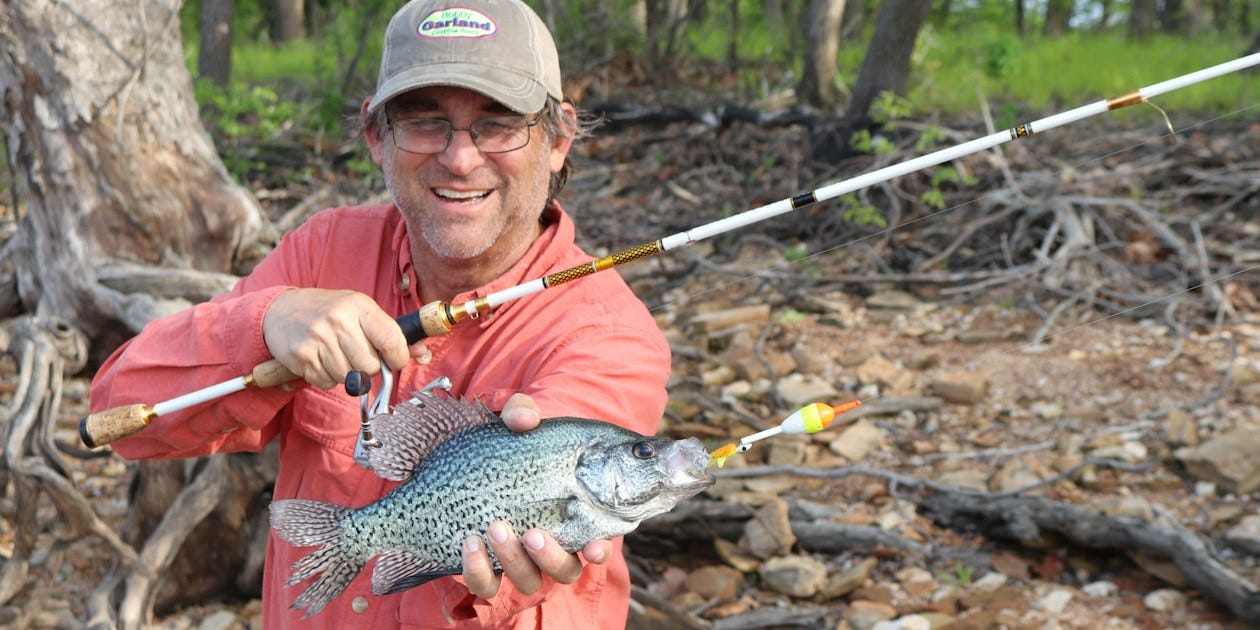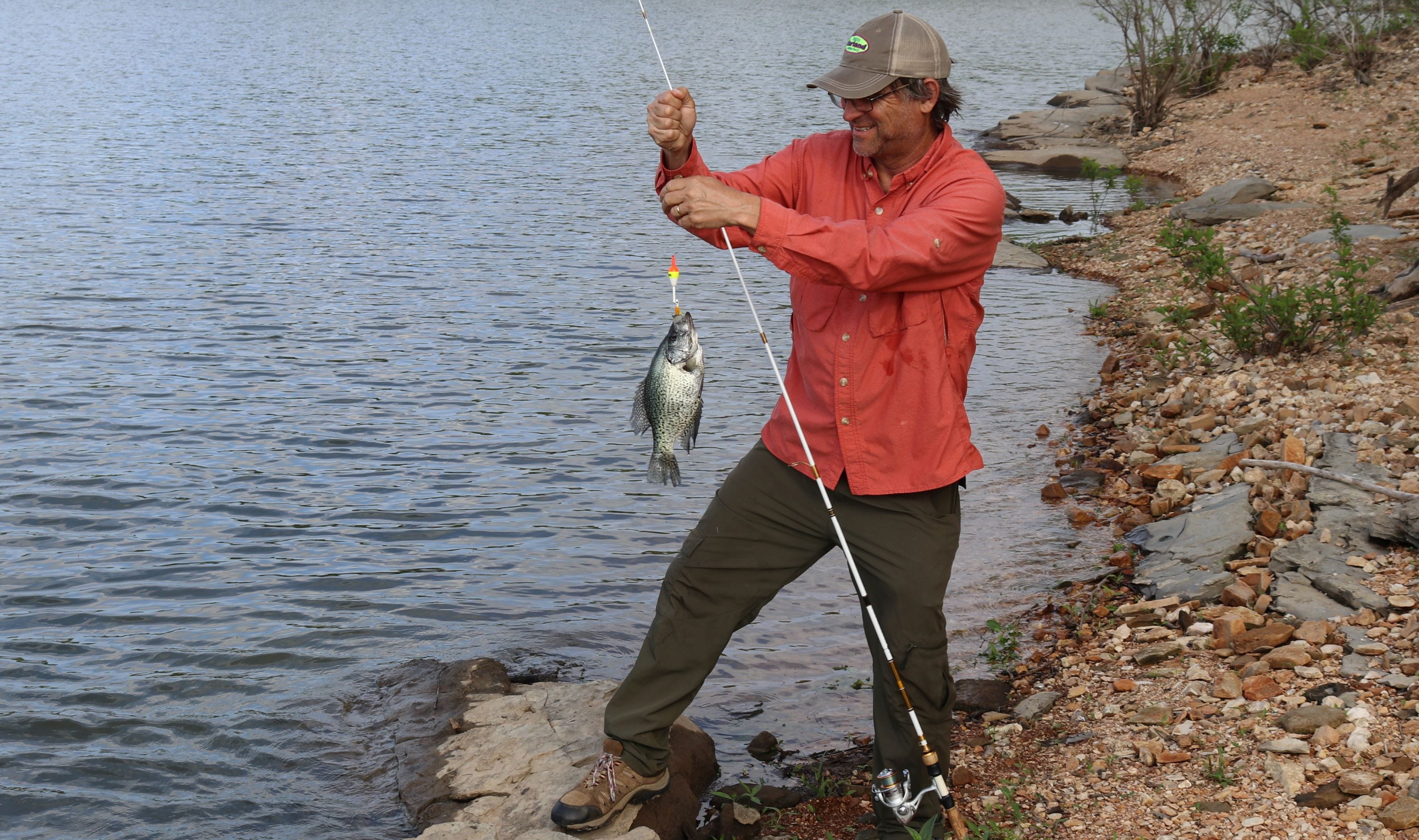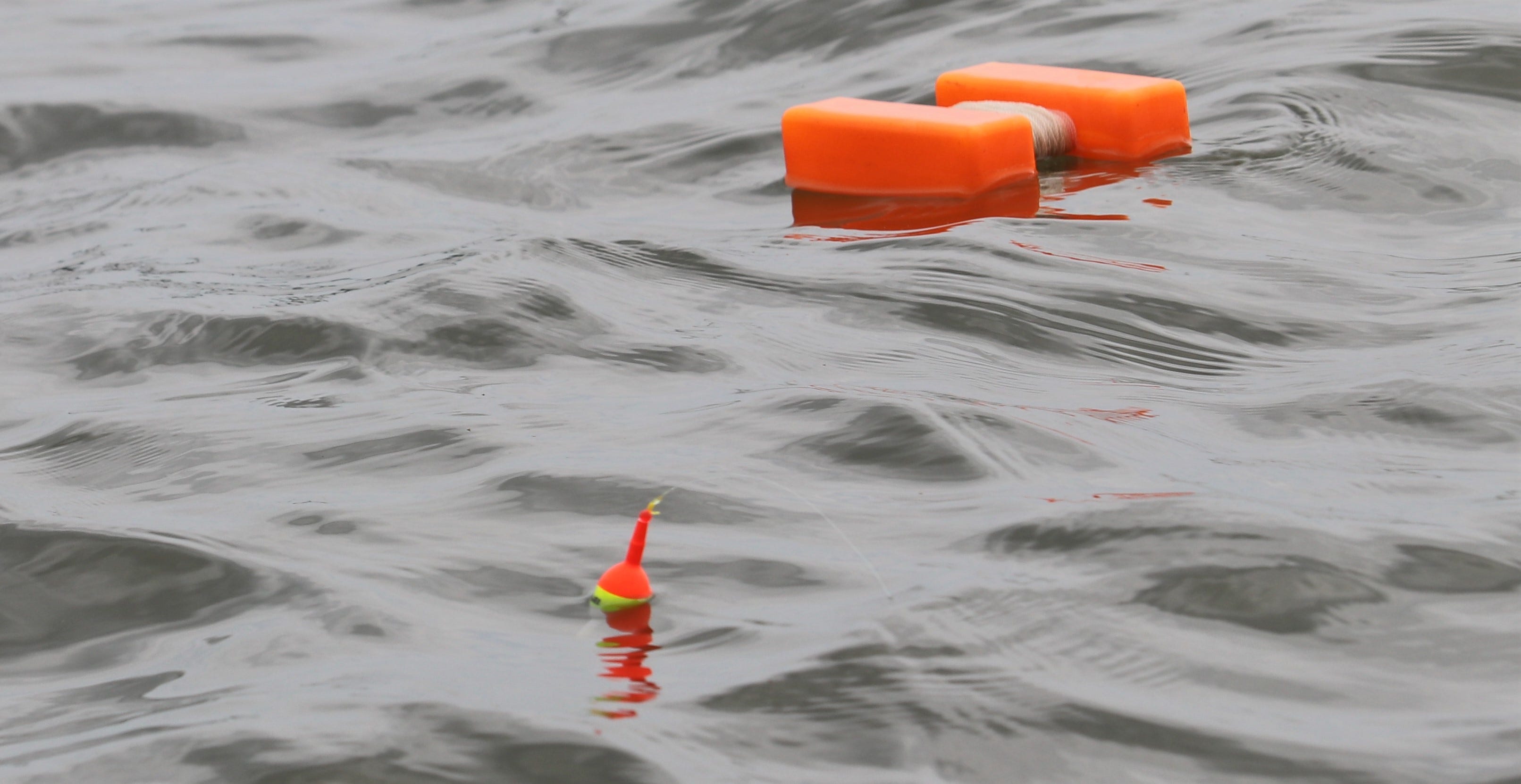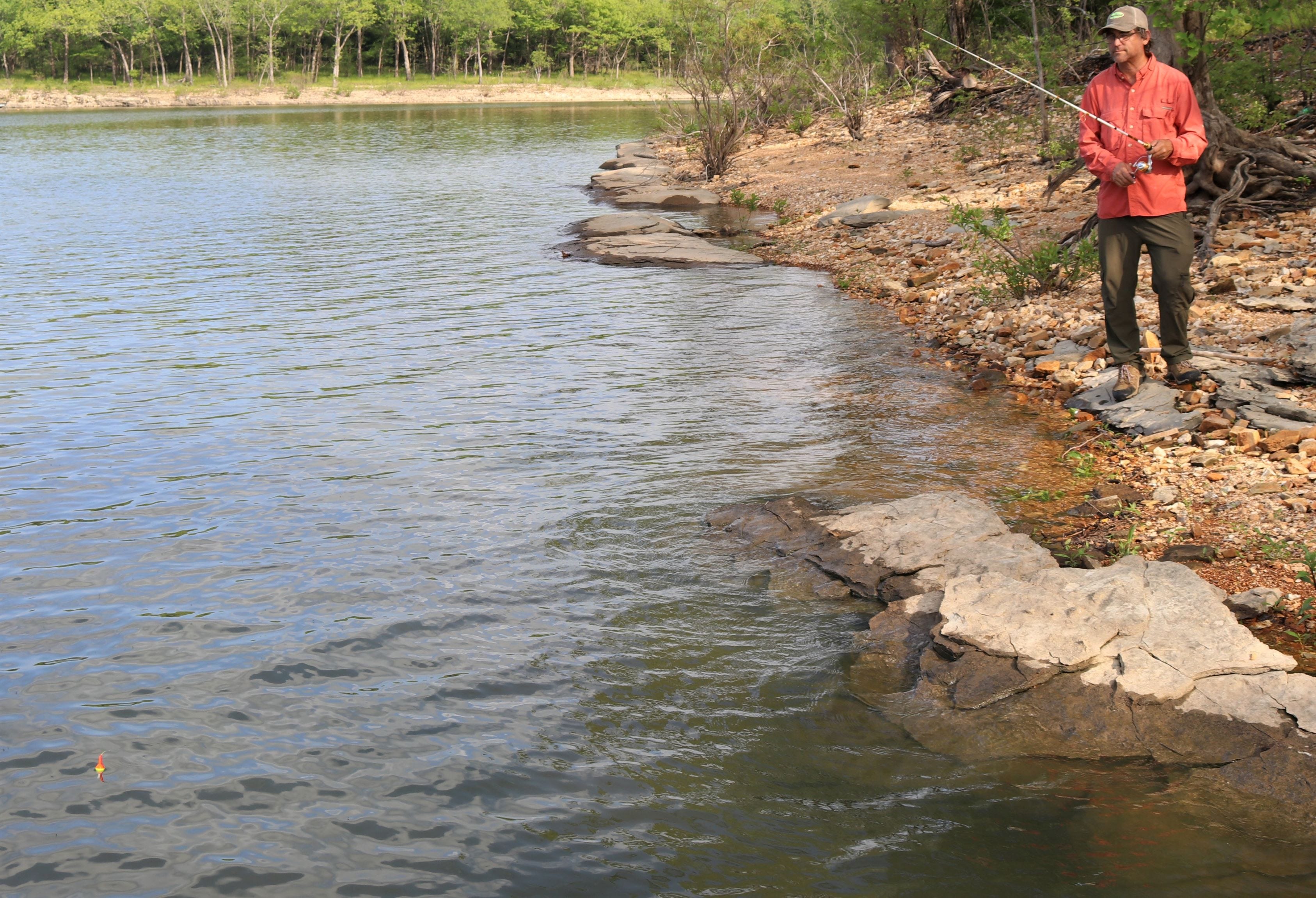- May 15, 2023
Use a Slip Float to Catch More Crappie
Learn the benefits of using a slip float for crappie, how to rig one and how to use a slip bobber rig to keep a crappie bait in the perfect position.


If you never fish for crappie with slip floats (also called slip bobbers) Chances are good that you’ve never given one much of a chance. Maybe they seem complicated or unfamiliar, or maybe you’re simply uncertain of the benefits or think they are only for live bait fishing while you prefer fishing with lures.
Whatever the reason, if you have not added slip floats to your crappie fishing arsenal, I strongly suggest giving these spectacular crappie catching tools a try. Once you’ve enjoyed the benefits and seen how easy a slip float is to use, my guess is that you’ll start keeping a few with your crappie gear and that one or more of your favorite rod/reel combos will have a bobber stop on the line most of the time.
Slip Float Basics


A slip float is simply a float that is designed to slide up and down the line, as opposed to being clipped to the line or otherwise fixed in place. Most have a hole through the center, from top to bottom, that the line goes through. They come in a variety of shapes, sizes and configurations for different settings, bait sizes and conditions. Those best suited for crappie fishing are usually between 1 1/2 and 3 inches in length and are designed to suspend between 1/24 and 3/16 ounces of weight.
Depth is controlled by a “bobber stop” on the line. These come in various forms. Common denominators are that they are adjustable but sufficiently snug to stay in place during use and are small enough to slide through rod eyes and but big enough to prevent the float from sliding farther up the line (often aided by a small bead between the float and stopper).
To fish, you simply position the stopper at the distance from the terminal end of the depth where you want your bait to suspend. So, if you want your bait at 6 feet, position the stopper 6 feet from the hook. The float will rest on your jighead or split shot when cast, creating an easy load to manage. After it lands, the offering will drop, pulling line through the float, until the stopper reaches the top of the float, thus suspending the bait at the chosen depth.
The capacity to effectively cast a rig and suspend a bait at any depth is the primary virtue of a slip float rig. Anytime you need to cast to a spot and suspend an offering more than a few feet deep, there is no better technique.
Often crappie will suspend a bit too deep for effective casting with a set float but not deep enough to position the boat over the fish without spooking them. Similarly, anytime you are bank fishing, and the fish are more than a rod’s length from the bank and more than a few feet deep, a slip float provides the best means for slowing presentations and controlling depth.
Slip Float Rigging with a Bobber Stop Knot


Thill Floats uses a simple knot system for Premium Bobber Stops, with a pre-tied slip knot on an applicator tube and a bead included for each stopper. Rigging is simple. You just have to do things in the correct order.
Start by sliding the tube and knot onto the line. Then slide the knot off the tube, tighten it enough to keep it on the line and slide the tube off and dispose of it. Next add your bead and slip float, with the line going through the float from top to bottom. Complete the rig with your jig or hook and split shot.
Once everything is on the line, slide the stopper to a starting depth, tighten the knot enough to keep it in place, and trim the tag ends. Don’t trim the tags super close. You want the capacity to re-tighten, if needed. Just enough so the stopper slides easily through your rod guides and so it doesn’t cause casting problems if you’re fishing deep enough to need to reel it onto the spool before casting.
Setting Slip Float Depth


The best means for setting your bobber stop for a specific depth really depends on the depth. If it’s less than about five feet deep, it’s easiest to simply “eyeball” it. For depths up to about twice the length of your rod, the rod becomes a great measuring tool. Beyond that depth, you can count one or two foot “pulls” of line through the stopper.
To use your rod as a measurer, begin with your hook at the butt end of the rod. If your rod is 7 1/2 feet and you want to fish 6 feet deep, just slide the stopper until it’s 1 1/2 feet from the butt end of the rod. If you want to fish 10 feet deep, adjust the stopper until it rests 2 1/2 feet from the rod tip on the section between the rod tip and the reel. Note: It’s easiest to slide the stopper to the end of the rod, open the bail and then pull 2 1/2 feet of line through the stopper (as opposed to working the stopper down through the eyes) and then reel until the lure is back at the rod tip to check the distance.
For deeper settings, start with the stopper at a known depth (twice the length of the rod is easy), and then pull line through the stopper in 1- or 2-foot strips. Either distance is easy to estimate accurately enough, but if you want to be precise, measure to a 1- or 2-foot section of rod to strip line beside and mark it with tape or note reference points like line guides.
Slip Float Presentations


Often, the best way to present a jig or live bait offering beneath a slip cork is to cast to a spot, let the bait fall until it gets into position and to do NOTHING else, beyond reeling to take up slack line if needed or until the float goes under and you need to set the hook. Even the slightest ripple provides plenty of action to bring life to crappie baits like a Bobby Garland Baby Shad or Mayfly.
If the crappie are relating to specific cover, whether that’s a bridge support or a brushpile, you might have to reel back and re-cast fairly frequently to keep the bait in zone. If they are more widespread but at a common depth, position yourself downwind or downstream of the zone, make a long cast and let the rig drift with your offering hovering in the fish’s dining room. Lacking wind, you might need to reel a turn or two or do a slow sweep from time to time to cover more water.
Some days, fish respond best when you add action, but subtle is almost always best for crappie, and it’s important to not move the bait too steadily or line will pull through the float, and you’ll mostly be working with the bait shallower than had been intended. Slight jiggles that rock the float without moving it horizontally can be very effective, as can gentle pulls with pauses between them.
Experiment with presentations to see how fish want the bait. More importantly, though, experiment with your depth setting. Crappie can be very depth specific and often most feeding fish will be holding at some key depth. Identifying that depth is a huge step toward a highly successful day of slip float crappie catching!



